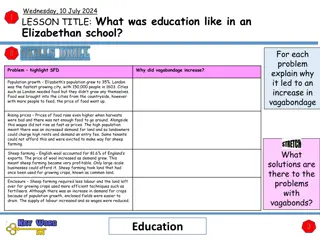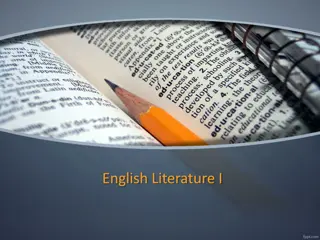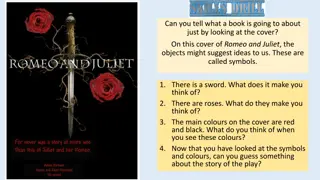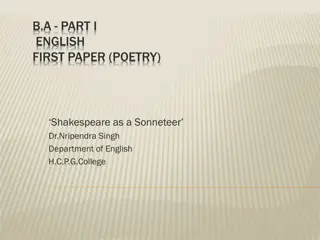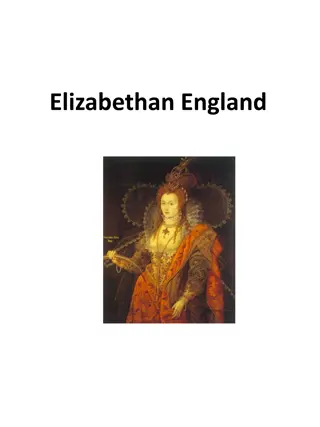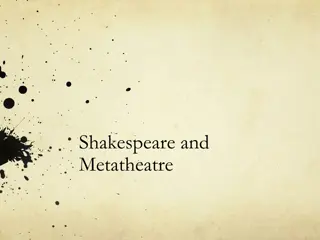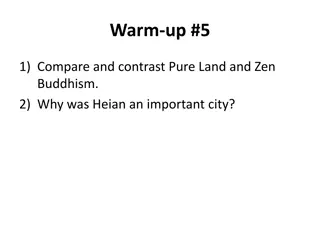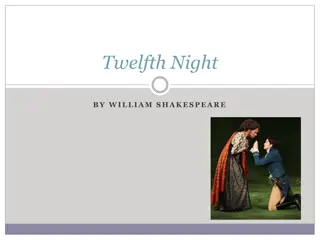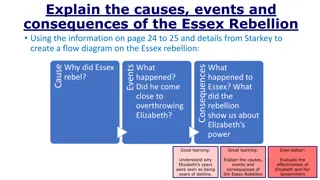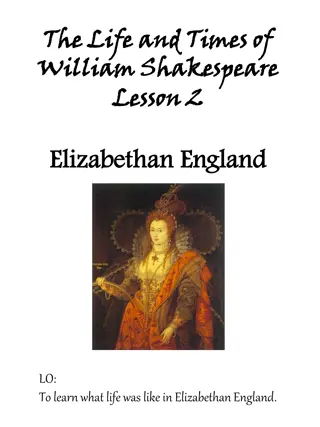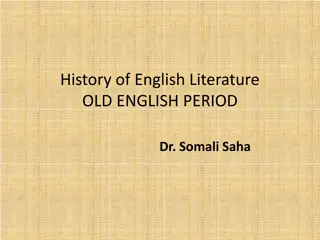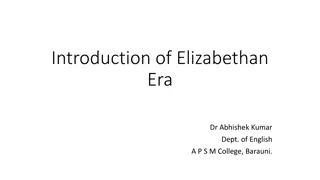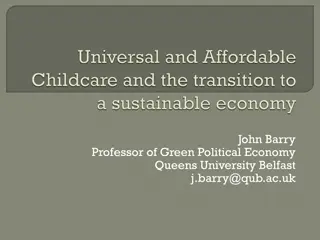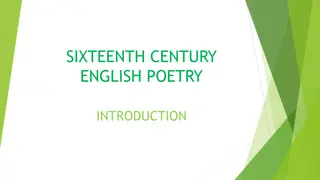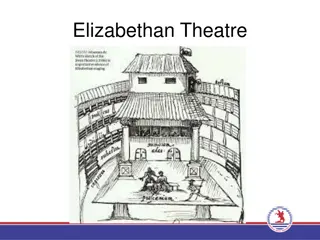The Flourishing Elizabethan Period in English Literature
The Elizabethan period, characterized by the reign of Queen Elizabeth I, was a time of significant cultural and literary growth in England. This era saw a robust development of drama and lyric poetry, with notable figures like William Shakespeare making their mark. Amidst political turbulence and religious conflicts, literature thrived, reflecting the spirit of optimism and freedom that defined the Renaissance. The middle class rose in prominence, the Tudor dynasty solidified its power, and England emerged as a maritime force. Queen Elizabeth's leadership fostered a sense of national pride, contributing to a rich literary legacy that endures to this day.
Uploaded on Oct 03, 2024 | 0 Views
Download Presentation

Please find below an Image/Link to download the presentation.
The content on the website is provided AS IS for your information and personal use only. It may not be sold, licensed, or shared on other websites without obtaining consent from the author. Download presentation by click this link. If you encounter any issues during the download, it is possible that the publisher has removed the file from their server.
E N D
Presentation Transcript
15 155 58 8- 160 03 3 ELIZABETHAN PERIOD
Historical Context The second half of the 15thcentury and the 16thcentury were a turbulent age in English history. In the 15thcentury The Wars of the Roses, the rivalry between two aristocratic houses, of York and of Lancaster, ended with the victory of the Lancaster family, when their distant cousin, Henry Tudor, claimed the throne. He was crowned as Henry VII, starting the Tudor dynasty. Throughout the Tudor reign, England constantly fought with its continental neighbors. The old aristocracy lost most of its wealth and power in the Wars of the Roses, so Henry VIII in the 16thcent, began giving titles to people from the middle class, making the new aristocracy, faithful to the king above all else.
The middle class was growing richer and more powerful. The communications revolution, started with the printing press, resulted in the fact that in 1600 nearly half of the population had some kind of minimal literacy. The spirit of the Renaissance began to show in England. The rising middle class had access to education, could read and write in their mother tongue, instead of Latin, and was becoming aware of endless possibilities for wealth and success that lay in trade and the New World. In the 1530s, Henry VIII broke with Rome. So in the 16th century, there happened 3 influential historical developments: the Renaissance, the Reformation, and the emergence of England as a maritime power. The English Literary Renaissance from the ascent of the House of Tudor to the English throne to 1660.
Elizabethan Age The reign of Elizabeth I was also a turbulent period, but she successfully coped with all the difficulties. England was threatened by the superpowers of the age France and Spain. Elizabeth was excommunicated by the Pope in 1570. She was in constant fear for her life. Nevertheless, English ships beat the Spanish Armada in 1588. Elizabeth managed to maintain a relative peace between the protestants and the Catholics. She tried to unite her people, by insisting that they are all English. This worked well most of the time, and the people developed a sense of national pride.
Elizabethan Literature The English Literary Renaissance consists of four subsets: The Elizabethan Age, the Jacobean Age, the Caroline Age and the Commonwealth Period. The Elizabethan era saw a great flourishing of literature, especially in the field of drama. The other major literary style was lyric poetry. Many of the most important dramatists of the period were also excellent poets.
Elizabethan Poetry Before and during the Elizabethan Age, medieval tradition blended with Renaissance spirit of optimism and freedom. The two poets who introduced novelties into lyric poetry before the Elizabethan Age were Sir Thomas Wyatt and Henry Howard, Earl of Surrey.
SONNET SONNET the dominant form of poetry of the Elizabethan Age Origins: Italy 13thc. Petrarch (14tthc.), Canzoniere (Laura), established the sonnet as one of the major poetic forms: love poem; devotion to the Lady who is usually unattainable; 14 lines Brought to England in the early 16tthcentury by Sir Thomas Wyatt and Henry Howard Earl of Surrey; they adapted the form to the English language
At the time, the writing of poetry was part of the education of a gentleman. Sonnets were very popular among the upper classes, and collections of sonnets and lyrics were often published. Aristocrats who did not write poetry themselves were usually patrons to other poets, giving them financial support. W. Shakespeare was one of these poets, since his collection of sonnets (1609) is dedicated to his patron, a young man of good family. Scholars are not certain when each of the 154 sonnets was composed, but evidence suggests that Shakespeare wrote sonnets throughout his career for a private readership.
One of the best lyrical poets of the Elizabethan Age was Edmund Spenser. In 1579 he produced a poem in 12 books, called The Shepherd s Calendar. It is significant for experimenting in meter and form, and the subject matter is diverse, but mainly pastoral. Spenser s greatest work is another long poem, The Fairie Queene. Spenser invented a special meter for it, called the Spenserian Stanza , which has often been used since. His best works also include poems Epithalamion, Prothalamion, and a collection of sonnets, Amoretti.
Other famous poets of the age include Sir Phillip Sidney, Sir Walter Raleigh and Christopher Marlowe. Elizabethan prose took several different forms, which in the time to come will develop into literary genres. Sir Thomas North- the translation of Plutarch s Lives of the Noble Grecians and Romans. Hakluyt and Purchas accounts of the voyages of English seamen and explorers Holinshed s Chronicles English history Beginnings of a novel University Wits John Lyly, Robert Greene, Thomas Nash Francis Bacon essayist, philosopher and historian
The Authorised Version of the Bible first translation of the Bible into Modern English. It appeared in 1611, and is also known as King James Bible. It was based on the translations into Middle English by Wycliffe and Tyndale. The language of the new translation has held a powerful influence on writers in English ever since. Ben Jonson the father of English literary criticism.
University Wits University Wits were a group of late 16th century English playwrights who were educated at the universities (Oxford or Cambridge). Prominent members of this group: Christopher Marlowe, Robert Greene, and Thomas Nashe from Cambridge, and John Lyly, Thomas Lodge, George Peele from Oxford. the literary elite of the time - they often ridiculed other playwrights such as Thomas Kyd and Shakespeare who did not have a university education. Some scholars think that Marlowe would have surpassed Shakespeare as an author if ha had not been killed in a tavern brawl University Wits did make a significant contribution to Elizabethan literature in various genres
Elizabethan Drama Tragedy: Aristotle imitation of a serious probable action (mimesis); arousing pity and fear in the audience; leads to catharsis (a purifying of the emotions that is brought about in the audience of a tragic drama through the evocation of intense fear and pity; emotional release and purification brought about by an intense emotional experience); characters: kings and nobles; the main character: of a high social and moral standing but with a tragic flaw/fault/mistake (misjudgment, ambition, gullibility, jealousy, indecisiveness) which brings about his downfall and final demise. Revenge tragedy especially popular a wronged hero plans and executes revenge.
Comedy: Aristotle comic figures are average to below average; it deals with ordinary/common people; only low or ignoble figures can strike us as ridiculous; the most ridiculous are those who although well-born are merely pompous or self- important instead of truly noble. Comedy: a story of the rise in fortune of a sympathetic central character (those of humble or disadvantageous backgrounds who prove their real worth).
The Italian Renaissance had rediscovered the ancient Greek and Roman theatre, and this was instrumental in the development of the new drama, which was then beginning to evolve apart from the old mystery and miracle plays of the Middle Ages. The Italians were particularly inspired by Seneca (a major tragic playwright and philosopher, the tutor of Nero) and Plautus (its comic clich s, especially that of the boasting soldier had a powerful influence on the Renaissance and after). The first regular English comedy, Ralph Roister Doister by Nicholas Udall, was written in this tradition. Another early comedy was Gammer Gurton s Needle. Lyly s comedies were an improvement of those early comedies.
However, the Italian tragedies embraced a principle contrary to Seneca's ethics: showing blood and violence on the stage. In Seneca's plays such scenes were only acted by the characters. But the English playwrights were intrigued by Italian model: a conspicuous community of Italian actors had settled in London and Giovanni Florio had brought much of the Italian language and culture to England. It is also true that the Elizabethan Era was a very violent age and that the high incidence of political assassinations in Renaissance Italy (embodied by Niccol Machiavelli's The Prince) did little to calm fears of popish plots. As a result, representing that kind of violence on the stage was probably more cathartic for the Elizabethan spectator.
The Spanish Tragedy by Thomas Kyd is one ofthose violent tragedies, and its plot is in some ways like Shakespeare s Hamlet. It became known as an example of a revenge tragedy where the hero has to avenge the death of a close relative. The first great dramatist of the time was Christopher Marlowe. Some of his tragedies, such as Tamburlaine the Great and The Jew of Malta, are also violent and bloody. But others, like Dr. Faustus and Edward the Second, set an example for other Elizabethan dramatists in the use of powerful blank verse and the development of characters to heighten the sense of tragedy. Shakespeare in particular was influenced by Marlowe in writing the historical plays.
English Renaissance Theatre Renaissance theatre derived from medieval theatre traditions, such as the mystery plays that formed a part of religious festivals in England and other parts of Europe during the Middle Ages. The mystery plays were complex retellings of legends based on biblical themes, originally performed in churches but later becoming more linked to the secular celebrations that grew up around religious festivals. Other sources include the morality plays and the "University drama" that attempted to recreate Greek tragedy.
Companies of players attached to households of leading noblemen and performing seasonally in various locations existed before the reign of Elizabeth I. These became the foundation for the professional players that performed on the Elizabethan stage. The tours of these players gradually replaced the performances of the mystery and morality plays by local players, and a 1572 law eliminated the remaining companies lacking formal patronage by labeling them vagabonds. The performance of masques at court by courtiers and other amateurs came to be replaced by the professional companies with noble patrons, who grew in number and quality during Elizabeth's reign.
Genres of English Renaissance Theatre History play (Marlowe Shakespeare) Tragedy (revenge tragedy Kyd, Marlowe, Shakespeare) Comedy (city comedy B.Jonson) Romance (Shakespeare)
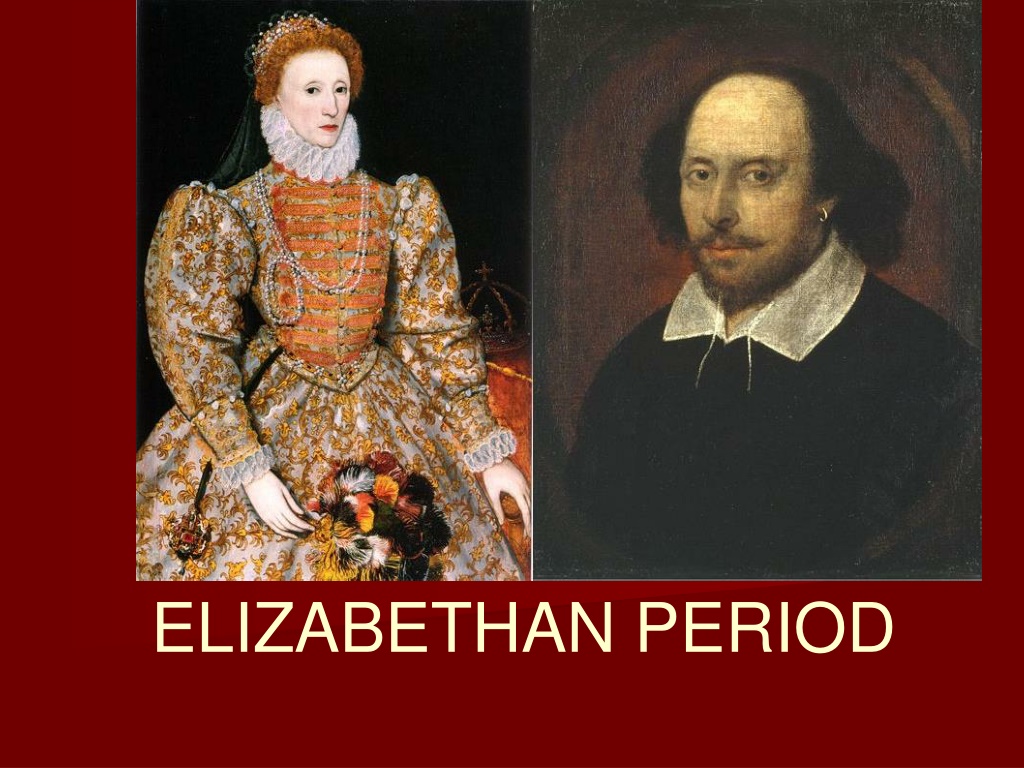



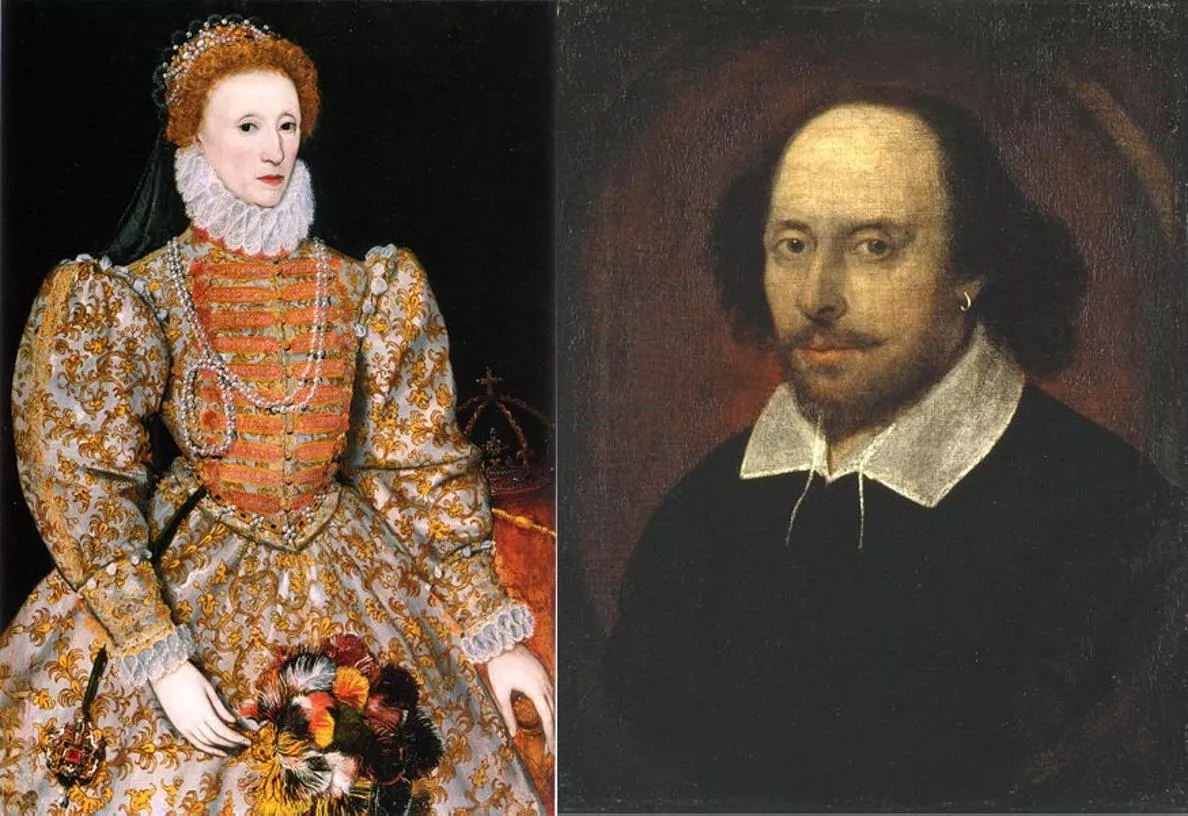
 undefined
undefined



































 undefined
undefined
